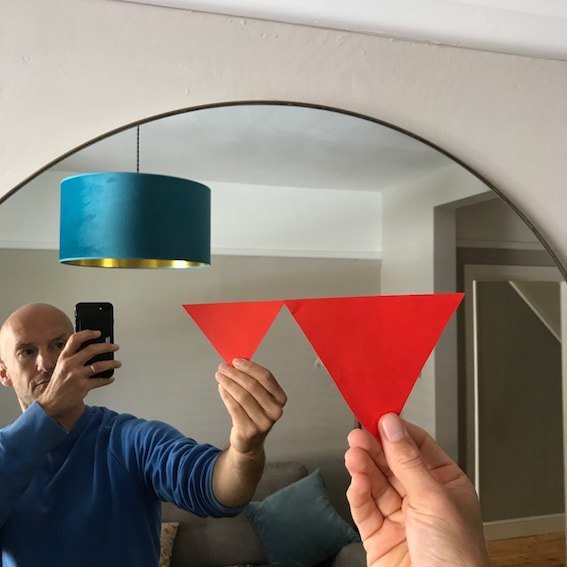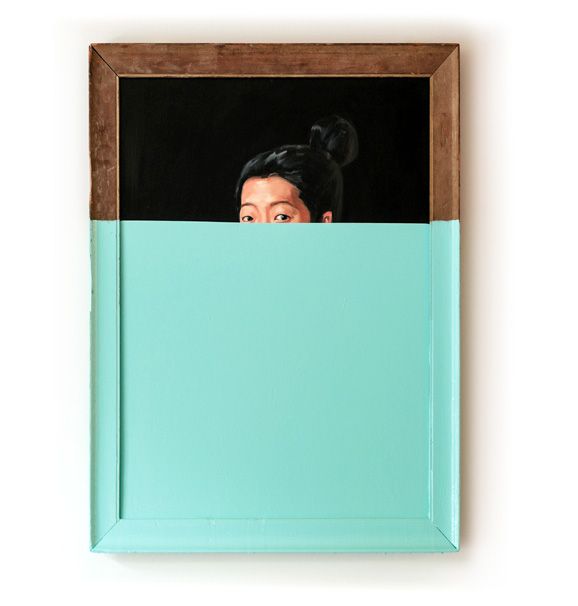|
Task 3 connects with Threshold Concept 3. It is an opportunity to consider the 'vocabulary' and 'grammar' of an artwork - how the elements of artworks combine and conspire to communicate in different ways to different people, in different times and spaces.*
You will complete: 1. a range of experimental photographic compositions (at least 10 diverse images; suggested time: approx 1-2 hours). 2. a (non-photographic) practical outcome in response to these initial experiments (approx 2-4 hours). |
A Mark is whatever we see that we recognise as having a cause - whether that cause is intentional or not. we see it and we see past it, or into it; it is what it is and a reminder of something besides. As such, A mark is a sign you can see. a sign is something which points beyond itself; something which means. JuliAN Bell |
|
The 10 images above are my own quick experiments. As it is, the red triangle is very dominant, so when seen as a collection, as above, a sense of motion or rhythm arises as the triangles compete for our attention. So...best click on them individually to consider the following provocations:
- How does the red triangle 'communicate' differently within each image - with other colours, shapes, objects or subject matter? For example, does it contrast most with different colours, shapes or textures? Does the shape suggest or echo some 'thing' - another shape (like that of a leaf or a tree, for example)? How does it communicate in different ways in different images - pointing, warning, interrupting, concealing..? And how might our existing associations with this shape and/or colour influence how we read each photograph - for example, in different compositions does it remind more of a play button or a pyramid, or a weather symbol or a section of bunting?
- How might the shape and colour that you choose - and your subsequent experiments - encourage you to think sensitively about various visual relationships and how these elements can communicate within a frame (and remind others of things beyond it)?
ACTIVITY PART 2: PERSONAL DEVELOPMENT
Using your photographic experiments as inspiration (but not directly copying):
- Develop an artwork that employs the ways of working that interest you most, but connects in some way to one (or more) of your photographs.
Your response might be representational or abstract, in 2 or 3 dimensions, text-based, performance-based, sound art...or something else.
The connection to the photograph might be obviously visual or something more conceptual - there are no rules here, it is open to interpretation and your own imaginative, subtle or playful connections.
TASK 3 ADDITIONAL PROMPTS & RESOURCES
The danger of sharing examples of artwork for a task like this is that students can be tempted to simply copy, or adapt simply (e.g. John Baldessari used coloured dots on photographs; I used squares, so that's fine, right?). With art, the boundaries between inspiration and lazy copying - or respectful homage and playful appropriation - are often hard to distinguish. Perhaps the challenge here then is for students to absorb and enjoy other works, maybe research what appeals wider (roll over the images to reveal the names of artists) - and then think and experiment in relation to photographs taken, and see what authentically bubbles up.
NOTE: Why show these examples? Well, colour and shape has obviously had some influence and connects to the photo task, but also I was looking for works where the elements seem to be in a more striking dialogue with each other, which might relate to colour contrasts, or perhaps surfaces (and disruptions of it). These works might all be described as (influenced by) 'Modern' or approaches. Many other artworks available for inspiration!
TASK 3 SUMMARY
- You should complete a range of notes in response to the information above. This might also include wider research and experimental sketches.
- A series of thoughtful experimental photographs in response to activity 1.
- An artwork/personal development in response to one or more of these photographs.






















